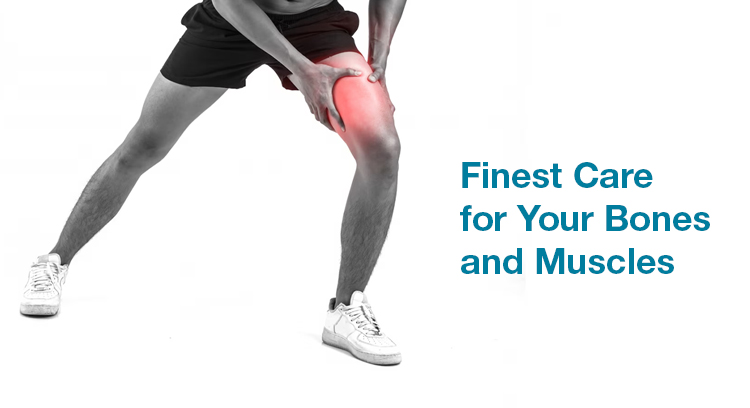

The anterior cruciate ligament (ACL) serves as an important knee stabiliser, connecting the thigh bone to the shinbone along with the posterior cruciate ligament. Overextension or forceful impact often leads to ACL injuries, resulting in swelling and pain. These injuries are more common in sports like football and basketball and show a higher incidence among women.
At Apollo Hospitals, Jubilee Hills, Hyderabad, we have the expert sports medicine specialists and best orthopaedic surgeons to perform arthroscopic ACL reconstruction successfully. ACL damage is usually diagnosed using MRI, and knee arthroscopy is the standard procedure for ACL reconstruction. Grafts, sourced from either the patient’s body or a cadaver, are employed in this surgery, with autografts being the preferred choice for individuals under 30.
What are the symptoms of ACL injury?
What happens in ACL Reconstruction Surgery?
Incision Placement
Autograft Extraction
Tissue Placement
Attachment to Bone
Many patients can resume normal activities, including walking and climbing stairs, just six weeks after surgery. However, a complete return to sports often requires a few months of recovery. Rehabilitation following ACL reconstruction surgery can facilitate a full recovery and regain strength and flexibility in the knee joint.
ACL Reconstruction Preoperative Instructions
ACL Reconstruction Post Operative Instructions
ACL Reconstruction success stories
https://www.youtube.com/watch?v=3QIeQBHuEg0
https://www.youtube.com/watch?v=LlzLJ6hqYFM
https://www.youtube.com/watch?v=3eQXFFTpAq0
Posterior cruciate ligament reconstruction is a surgical procedure designed to replace a torn PCL and reinstate stability in the knee joint. The PCL is the largest ligament in the knee and twice as robust as the ACL, prevents excessive backward movement of the shin bone. injuries to the PCL usually result from a force applied to the front of the knee or upper shin.
In sports-related incidents, PCL injuries commonly occur when falling onto a flexed knee. In addition, overextension and excessive bending of the knee can cause PCL injuries, and the ligament is often affected in cases of multiple ligament injuries during knee dislocations.
Diagnosis of PCL Tear
Our orthopaedic surgeons diagnose a torn PCL through a thorough history and physical exam. This assessment checks the knee’s motion and looks for associated injuries. X-rays are taken to check for any bone injuries, and sometimes, the torn PCL may pull off a piece of bone, which can be fixed.
Most patients undergo an MRI, which is effective for recent PCL tears. It also assesses joint and meniscal cartilage integrity. In some cases, an examination under anaesthesia and arthroscopy may be needed for a definitive diagnosis, but most PCL tears are diagnosed without surgery.
What Happens During PCL Reconstruction Surgery?
PCL reconstruction is typically done under general anaesthesia and often through arthroscopy, lasting around one hour. In this surgery, the surgeon makes two or three small incisions, using a tiny camera to inspect your knee’s interior. Loose material from joint surface wear is removed, and the ligament ends are prepared for grafting.
Most procedures use hamstring tendons to connect torn ligament ends, secured with surgical screws into the bone. Stitches or staples close the incisions, and your knee is bandaged. If multiple ligaments are reconstructed, a brace may be necessary.
PCL Reconstruction is commonly performed as a day case, allowing you to return home on the same day as the procedure.
The Medial Collateral Ligament (MCL) is one of the four major knee ligaments, connecting the thigh bone (femur) to the shin bone (tibia) on the inner side of the knee joint. Its primary role is to provide stability to the knee. MCL injuries can happen due to direct impact on the knee, resulting in a minor stretch (sprain) or a partial to complete tear of the ligament. Such injuries are more prevalent among individuals engaged in specific sports such as skiing, football, basketball, and volleyball.
Diagnosis
If a potential MCL tear is suspected, your surgeon will assess your knee by bending it and applying pressure to check for any looseness. Additionally, imaging tests like X-rays, MRI, and ultrasound may be recommended by the surgeon. These tests serve to rule out any additional knee injuries and determine the extent of the MCL tear.
Procedure
Steps for the surgical procedure of medial collateral ligament reconstruction involves:
The Posterior-Lateral Corner (PLC) is situated on the outer (lateral) and back (posterior) part of the knee, consisting of multiple ligaments, tendons, and soft tissues. These components interconnect, attaching to various structures and contributing to the overall static and dynamic stability of the knee’s posterior-lateral region. Their role includes limiting excessive rotational and sideways movements, as well as safeguarding against overextension of the knee. Injuries to the PLC often occur due to athletic trauma, motor vehicle accidents, and falls.
What is the Procedure of PLC Reconstruction?
PLC reconstruction is done with regional anaesthesia using an open surgery approach. The surgeon makes a cut on the outer side of the leg and knee to reach the injured posterolateral ligament complex. After checking and repairing as much as possible, they may use devices like screws or staples. To fix torn ligaments, tissue from the patient (autograft) or a donor (allograft) is added. If there are other knee injuries, like ACL or PCL tears, the surgeon usually handles everything together. The reconstruction method depends on whether the injury is recent or long-standing.